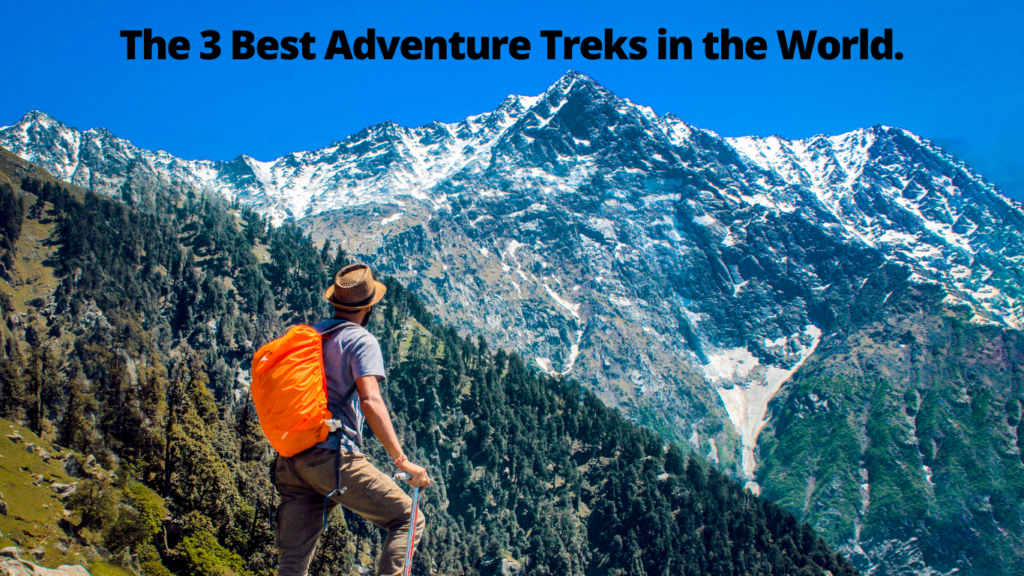Ever considered going on a trek and don’t know how to plan for a trek?
Trekking, It’s definitely an experience you should try, but like any type of travel, it can be stressful to plan out the details—especially if you’re not familiar with the process. Trekking is an incredible way to spend time in nature, learn more about the local culture, and get in shape while doing it. However, it can also be quite dangerous or uncomfortable if you don’t know what you’re doing beforehand. As such, here are eight things you need to know before going on your first trek!
Contents
1) Get fit before you start
This one may seem obvious, but some people (for example, those who’ve never been hiking or trekking before) might not be in tip-top shape. But if you want to experience everything that goes along with trekking (or any type of traveling), you need to be prepared. The first thing you should do is visit your doctor and ask for a clean bill of health—your doctor can check your overall health as well as make sure you don’t have any conditions that could hinder your journey. If there are any minor health concerns, they can also give recommendations on how to deal with them while hiking or trekking so that it doesn’t become anything serious later down the road.
2)Train yourself for walking
Start by walking every day, maybe right after you wake up or before you go to bed. If possible, walk outside. Try not to take your phone with you—leave it at home and give yourself time for reflection. This will help you make sense of what is happening around you, which in turn will make it easier for you when it comes time for your trek. You can start small; instead of trying to cover 10 miles in one day, aim for 5 and work your way up from there as necessary. Start out slow if you have done little or no physical activity—it’s important that you feel good about walking before doing something more challenging like hiking up mountains.
3) Research your trek thoroughly
If you’re new to trekking, research all of your options thoroughly before you choose a trekking company and pay for your trip. This will help ensure that you are well prepared for any emergency situations which might occur during your travels. For example, if you have an emergency contact at home, make sure they have all of your travel details and emergency contacts in case something goes wrong while you’re away. It is also important that they are aware of where and when you are traveling as well as how long it should take for them to get in touch with someone from your trekking company in case something does go wrong.
4) Pack the essentials
Ensure that you always have your passport and other identification cards, as well as credit or debit cards, with you when you travel. Keep a copy of your medical insurance policy in case you need it. And pack medications that you take regularly in their original containers (pack them in your carry-on if they need to be kept cold or out of direct sunlight). Whether you’re traveling by car, train, boat, or plane, pack clothing appropriate for all possible weather conditions. If flights are canceled due to bad weather and temperature extremes common where hiking is most popular, missing even one day can disrupt every aspect of your trip — from airport logistics to hotel reservations. Check our Essential Trekking Gears for Trekking: Ultimate Guide for gears you need for trekking.
5) Choose the right Footwear
It’s very important that you choose proper footwear for trekking, as it can make all of the difference. When looking for good hiking boots, take note of your trekking style and what type of terrain you will be traveling on. For example, hiking in mountainous areas may require special treads and extra ankle support. Take into consideration how much time you plan to spend walking each day—there’s no sense buying a heavy boot if you only plan to walk three miles each day! Additionally, there are different types of socks that are better for specific activities. Wool socks are great for keeping feet warm in cooler climates or when hiking at high altitudes; however, they tend to be heavier than synthetic materials.
6) Carry the right backpack
The best type of backpack is one that fits your needs and your body. If you have broad shoulders, choose a bag with plenty of support straps and padding. Make sure it isn’t too heavy, or you won’t be able to carry it comfortably. Think about how many days you’ll be gone—if you need extra water, sleeping bags, or other supplies, make sure they don’t add too much weight to your pack (you might want to stick them in your daypack). Above all else, remember these two words: a breathable fabric. Don’t buy an old-school canvas bag if you can help it–make sure your bag has stretchy side panels so sweat can escape during those long uphill treks.
7) Get an early start
It’s always better to start early when traveling, but especially when hiking in unfamiliar territory. And while it’s easy enough to find your way down a trail you haven’t hiked before, it can be tougher coming back up — particularly if you set out during peak hours. If you find yourself working against crowds of others trying to get down from a popular peak or mountain, it’s often easier and safer if you can just wait until later in the day. Hiking early will also allow for plenty of time should anything go wrong; hikes tend to take longer than expected, after all! It’s always better for there to be too much time than not enough — such is life!
8) Listen to your body but don’t be afraid of it
As you train for your trek, pay attention to how your body responds. If you’re feeling weak or lightheaded, slow down—you don’t want to collapse during your trip. On days that you exercise, eat more carbohydrates and proteins than usual. The increased calorie intake will give you energy. Do not try any new supplements or drugs unless advised by a doctor first; some may cause unexpected side effects, like stomach pain and nausea.
9) Eat well during your trip
From jet lag and long car rides to roughing it in tents, there are many ways in which a trip can impact your eating schedule. As such, it’s important that you fuel up properly before and during each adventure. Pack healthy snacks like nuts or granola bars in case you find yourself famished on day one of your trip; when hunger hits, reach for something with protein or fiber. If you’re embarking on an overnight trek, be sure to pack high-energy foods like granola bars as well as plenty of protein-packed foods like jerky, nuts, and hard cheese that won’t go bad at higher altitudes.
10) Follow instructions of local guides if you are on a group tour
The most experienced guide will have trekked more times than you can count and has likely taken your trail many times. It is their job to keep you safe and make sure everyone in your group is having fun. If they suggest following a certain path, don’t question it; just do it. Their advice can mean life or death if something goes wrong, so respect that they know what they are doing—for good reason! This goes for any activity where there is risk involved: always follow the instructions of local guides first before setting off on your own. And never forget that wherever you go, even when abroad, people who live there will be experts in what to do in an emergency situation because an emergency situation happens often when doing something dangerous!
Conclusion
The bottom line is that you should make sure you are prepared and know how to plan for a trek before going on a trek. A small amount of preparation can save you from lots of trouble.




Pingback: How to Avoid Altitude Sickness While Trekking in Nepal - HikePackers
Pingback: Essential Trekking Gears for Trekking in Nepal: Ultimate Guide - HikePackers
Pingback: How to plan for a trip to Ladakh: Ultimate Guide - HikePackers
Pingback: The Top 10 Trekking Destinations in the World
Pingback: Trekking as a Hobby (2024): Embracing Adventure and Wellbeing Outdoors | HobbyFAQS